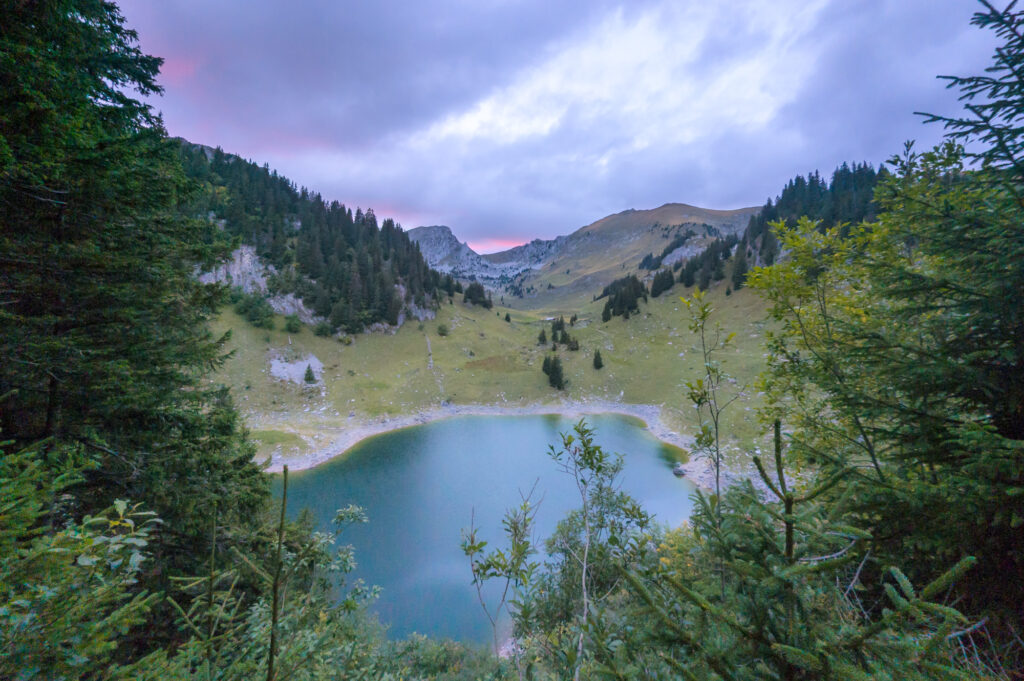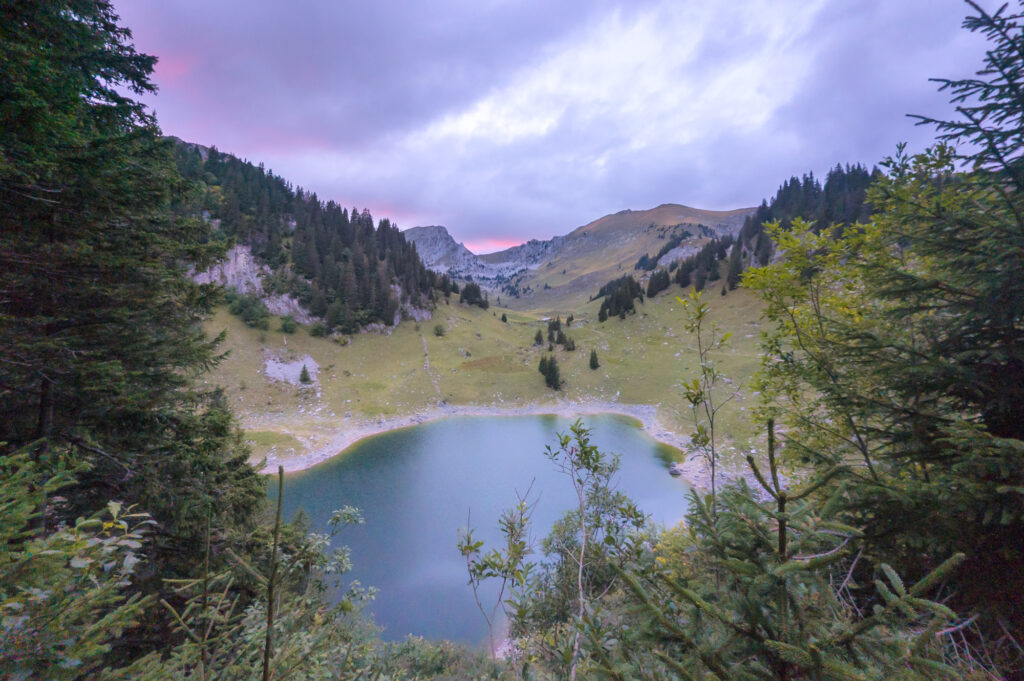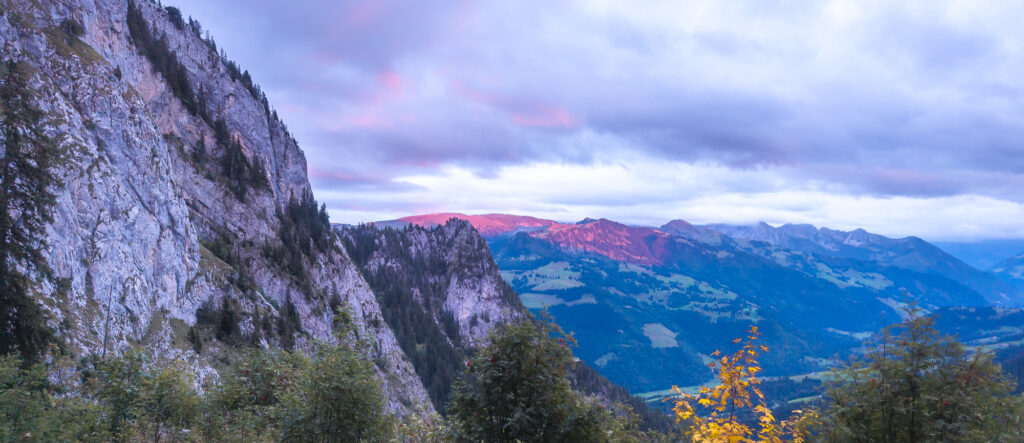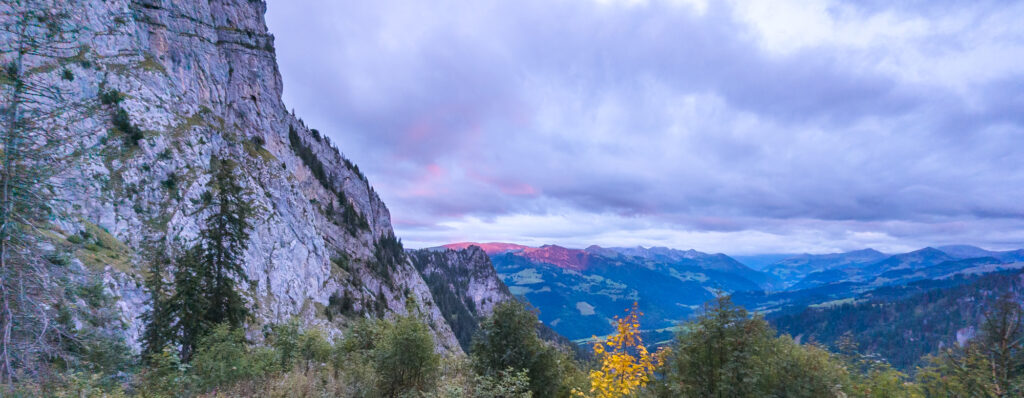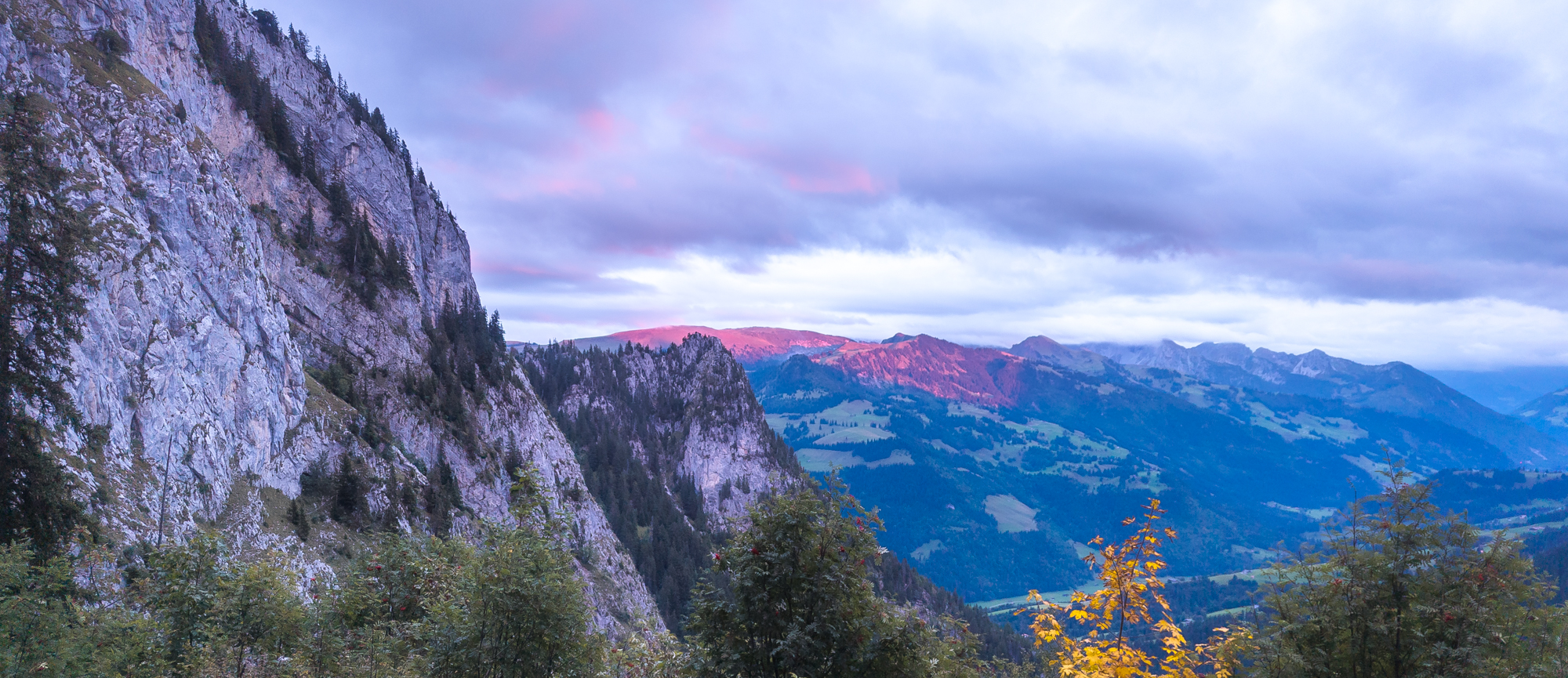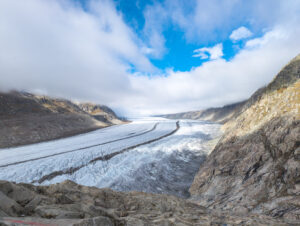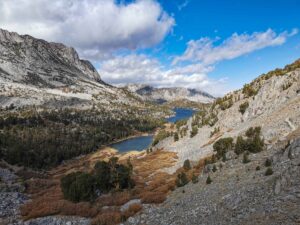It was Friday, 3:30 pm, I left the Zug area with one simple goal: sleep where no one else is. I steered toward Thun/Interlaken, then slipped into the Simmental, aiming for a tiny nameless parking spot above Boltigen I’d pinned on my map. The track up is unpaved, and you open/close a couple of pasture gates on the way—classic alpine service road etiquette. Near the turnoff sit a few low-key army buildings; more on those in a moment.
Up the rough track: a hint of Switzerland’s “hidden” bunkers
That anonymous parking nook makes sense once you notice the concrete angles tucked into the slopes. The Simmental was part of Switzerland’s WWII/Cold-War defense web—the Reduit—with small bunkers and obstacles positioned to control valley access. Sperrstelle Boltigen is one of the catalogued sites; many works are overgrown or disguised to blend with barns and pasture buildings. Look, don’t enter; many are sealed or on private ground.
Zooming out, these pieces belong to a broader belt (e.g., Wimmis–Stockhorn sector) tasked with shielding the Oberland approaches—another reason you still stumble upon “anonymous” military structures in otherwise pastoral corners.
Dusk dash to the shore
From the parking spot, it’s an easy ~1.5 h hike on pasture tracks. I reached the bowl just before dark as the forecast’s grey split open and the sky went deep red across the water. I pitched fast, then ate a simple dinner—bread, cheese, a bit of meat; bananas and shameless sweets for dessert—as the clouds pulled away and the stars switched on.
What you’re looking at: Alp Walop & its quiet lake
Walopsee rests in a tucked-away high valley on Alp Walop, encircled by meadows and firs. It’s a small endorheic lake—about 300 × 200 m—that often shows striking autumn colors. The alp is actively grazed in summer; expect bells, fences, and sometimes herd-protection dogs, so give flocks a wide berth and keep things calm.
A lovely deep-time footnote: just above the alp at Ranggiloch, archaeologists documented Stone-Age settlement traces, a reminder that this quiet bowl has drawn people for millennia—long before backpacks and bivy sacks.
Night on the shore
Once the tent was up, the wind dropped and the bowl turned silent. No roads, no glow from towns—just stars doubled in the water. It’s the sort of place where time thins out.
Morning & down the same way
Breakfast with the first light, then I padded back to the car and rolled home. For anyone chasing a last-minute, no-crowds night near Thun/Interlaken, this is exactly that: short approach, big peace.
